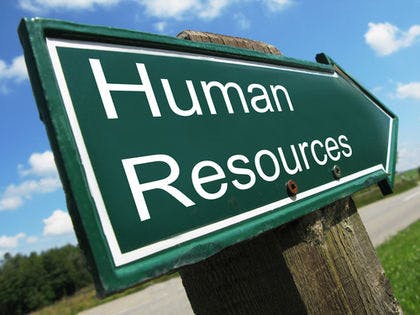The “knowledge economy,” coined in 1967 in Peter Drucker’s The Effective Executive, has marked the transition from the production-centric model of the Industrial Age (think Henry Ford’s assembly line) to a new structure focused on intellectual output from employees.
This shift has, of course, transformed human resources management.
One could argue that the knowledge economy has ushered in HR’s renaissance, evolving from a one-dimensional focus on singular tasks and outputs into a practice that increasingly mirrors the multidimensional complexity of human beings and “our heads” (to use Drucker’s words).
Brilliant minds and leaders have articulated many of the traits, best practices, and organizational mindsets underlying the knowledge economy: specialization, trust, strong culture, and contribution, to name a few.
But in many ways, one can think of each of these facets as another channel through which to “engage” an employee. And companies with engaged employees see 87 percent higher retention and 202 percent more revenue (among other benefits).
Working with our heads
In Essentialism, Greg McKeown expounds on the important practice of doing fewer things better. To reach our “highest potential contribution,” McKeown suggests that one of the most important requirements is our state of mind and, by extension, our relationships with others.
Across the spectrum of the knowledge economy’s workforce, the impact of human relationships and emotional culture remains fundamental. To wit: Employees with a best friend at work are seven times more likely to be fully engaged at work.
And while there might be many workforce characteristics from previous eras that we should celebrate shedding, this basic element is one that requires greater investment.
Think of it this way: How many call center employees are excited to go to work every day because of a new technology for making more phone calls? How many consultants get out of bed because they can’t wait to try the new CRM?
How we perform our work is certainly important. But building relationships beyond the work itself is what powers organizations in the knowledge economy.
Making human connections evident
Human connections can take many forms: Feelings of purpose and contribution, the friends you work with, shared interests and passions among colleagues and with the company. Here are five (5) ways to make human connections evident to your employees:
- Make communications technology about more than productivity. Today, a big part of how we build and maintain relationships in our personal lives is through content. Organizations must embrace the role content plays in relationship development — and, therefore, engagement. Create a digital space for employees to interact that is separate from the tools they use to share files and manage workflows.
- Embrace new data points in the HR business intelligence landscape. The semi-regular employee survey isn’t enough. Data must be collected in real time and should combine active data collection (like surveys) with passive data collection that looks at sentiment, topics of discussion, and personas across geography, role, department, and more.
- Ask for frequent input from employees. People love what they help create. Ask for input that’s actionable so employees can see the role their input plays, as well as their contribution. Technology is a great way to quickly facilitate targeted employee input.
- Facilitate new connections. One of the building blocks of innovation is the collision of ideas; the same can be said for relationships. Experiences and technology are both great ways to create opportunities for employees to make new personal connections at work. One idea is an optional, recurring “Lunch Around,” in which employees are paired up to get lunch on the company. Strategically organize matchmaking to facilitate the types of collisions that you think will have the greatest impact.
- Humanize the leadership team. No matter the size of your organization, the importance of leadership connecting with the company workforce cannot be understated. It builds morale, confidence, trust, and much more. Go beyond events and handshakes, thinking about how technology can play a role. It always amazes me how subtly our own customers’ executive leadership teams pull this off, even by sharing a family photo or liking a photo of the charity kickball tournament that another employee posted.
Do you make these connections a priority in your company’s emotional culture? Do your employees feel connected to one another — or their company?
